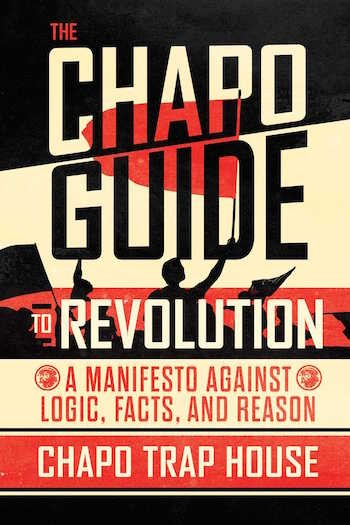The Chapo Guide to Revolution: A Manifesto Against Logic, Facts, and Reason isn’t just a book; it’s a cultural phenomenon born from the podcast Chapo Trap House. This guide examines the book’s approach to American politics, blending humor with critical analysis.
The book The Chapo Guide to Revolution: A Manifesto Against Logic, Facts, and Reason, authored by Chapo Trap House members Felix Biederman, Matt Christman, Brendan James, Will Menaker, and Virgil Texas, takes a satirical look at the current political landscape. The book, like the podcast, offers a leftist perspective on American politics, critiquing both conservative and liberal approaches to governance. It tackles societal issues with a blend of dark humor and sharp commentary, providing a unique lens through which to view the country’s problems.
The Chapo Trap House podcast gained popularity by dissecting current events and political discourse with a distinctive ironic tone. The Chapo Guide to Revolution translates this approach into a long-form format, offering a broader historical context for understanding present-day issues. The book challenges the notion that Donald Trump’s election was an anomaly, arguing instead that it was a consequence of existing political and social structures.
The book’s structure allows for a comprehensive exploration of American history and its influence on contemporary society. Divided into six chapters, The Chapo Guide to Revolution examines the historical narratives of American liberals and conservatives. It dives into the impact of political movements on media, culture, and the modern workplace.
While The Chapo Guide to Revolution appeals to existing fans, newcomers should be aware of its provocative style. The humor, which includes vulgarity and unconventional references, may not suit all readers. However, for those who appreciate its comedic approach, the book offers moments of genuine insight and entertainment.
The book’s comedic style is marked by its fast-paced delivery and unexpected juxtapositions. The authors create humor by linking seemingly unrelated cultural references to political issues, often with absurd results. This technique is used to highlight the ironies and contradictions within American society.
Even if the book’s comedic style doesn’t resonate with all readers, The Chapo Guide to Revolution offers insightful critiques of modern American culture. The “Taxonomies” sections, featuring caricatures of political archetypes, are particularly effective. These profiles, accompanied by illustrations by Eli Valley, satirize common strains of political thought, exposing the shortcomings of both liberalism and conservatism.
The Chapo Guide to Revolution focuses more on identifying problems than offering solutions. While it excels at critiquing existing systems, it provides limited guidance on how to create a more just and equitable society.
The book’s willingness to challenge established figures, including those typically revered by liberals, may alienate some readers. Its irreverent approach to political discourse can be polarizing. Yet, The Chapo Guide to Revolution offers a valuable left-wing perspective on American history and culture. It encourages readers to question conventional narratives and to engage with complex issues in a critical and humorous way.
The Chapo Guide to Revolution doesn’t offer easy answers, but it provides a unique lens through which to view the absurdities of contemporary society.


